

Endangered Places
The preservation of these ecosystems and well-known structures is crucial to prevent their destruction, loss of biodiversity, or extinction of native species. The integrity of these sites is not only essential for their historical and cultural significance, but also for the ecosystem services they provide, such as supporting native flora and fauna.

Amazon Rain Forest
South America
The Amazon rainforest is located in South America and spans across nine countries, primarily Brazil. It is the largest tropical rainforest in the world, covering about 5.5 million square kilometers and harboring an incredibly diverse ecosystem. However, the Amazon is facing numerous threats, one of the most significant being climate change. Rising temperatures, droughts, and extreme weather events are altering the rainforest's delicate balance, leading to increased forest fires, deforestation, and loss of biodiversity. These changes have a devastating impact on the local ecosystems, endangering countless plant and animal species and posing a risk to indigenous communities who rely on the forests for their livelihoods. Efforts to combat climate change and protect the Amazon are crucial to preserve this unique and vital ecosystem.
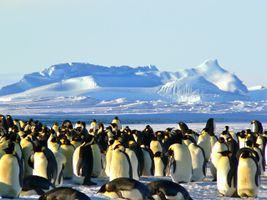
Antartica
South Pole
Antarctica is a continent located at the Earth's southernmost region, characterized by its extreme cold and vast ice sheets. It is home to diverse species, including penguins, seals, and whales, that have adapted to its harsh conditions. However, Antarctica faces numerous threats, primarily from climate change. Rising temperatures result in melting ice, leading to rising sea levels and the loss of habitat for many Antarctic species. Additionally, the warming climate disrupts the delicate balance of ecosystems, affecting food chains and the breeding patterns of various species. The impacts of climate change pose significant challenges to Antarctica's unique environment and wildlife.

Arctic
North Pole
The North Pole is the northernmost point on Earth, located in the Arctic Ocean. Although uninhabited, it is a critical region for understanding climate change. The threats it faces are primarily from climate change, leading to the loss of sea ice, rising temperatures, and melting glaciers. These changes have severe consequences for local ecosystems, as they disrupt the habitat and endanger species like polar bears, walruses, and seals. Additionally, the melting ice opens up new opportunities for resource extraction and transportation, further impacting the delicate balance of the region and posing potential risks. Efforts are being made to raise awareness and implement measures to mitigate these threats and protect the fragile ecosystems of the North Pole.

Bordeaux Vineyard
France
The Bordeaux Vineyards in France encompass a renowned wine-growing region, known for its production of high-quality wines. Located in southwest France, Bordeaux enjoys a temperate maritime climate and fertile soils, which contribute to its viticultural success. However, the region faces multiple threats, particularly from climate change. Rising temperatures and more frequent extreme weather events pose challenges to the delicate grape-growing process, increasing the risk of diseases, pests, and reduced grape quality. Additionally, climate change impacts the local ecosystems, such as changes in water availability and ecological imbalances, which can have cascading effects on the entire ecosystem. Vineyard managers and winemakers are adopting sustainable practices and implementing adaptive strategies to mitigate the threats and preserve the unique character of Bordeaux wines.
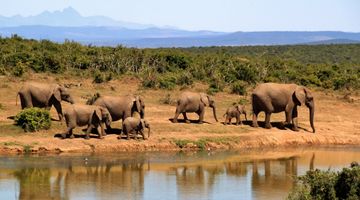
Congo Basin
Africa
The Congo Basin is a vast tropical rainforest located in Central Africa, spanning across multiple countries such as the Democratic Republic of Congo, Cameroon, and Gabon. It serves as home to diverse wildlife, including endangered species like gorillas and elephants, and is a vital carbon sink for the planet. However, it faces numerous threats, notably from climate change. Rising temperatures and altered rainfall patterns contribute to prolonged droughts and increased risk of wildfires, which pose a significant threat to the forest's health and biodiversity. Additionally, deforestation, illegal logging, and poaching exacerbate the situation, leading to habitat loss, fragmentation, and further endangerment of species within the ecosystem. The impacts of these threats not only affect the local ecosystems and wildlife but also have global consequences on climate regulation and biodiversity loss.
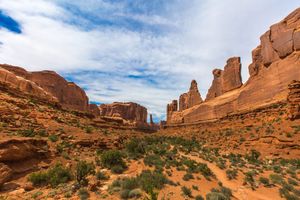
Grand Canyon
United States Of America (USA)
The Grand Canyon, located in Arizona, is a massive geological wonder that attracts millions of visitors each year. It stretches approximately 277 miles long, with a width of up to 18 miles and a depth of over a mile. While it is a natural masterpiece, it faces various threats, including the impacts of climate change. Rising temperatures and altered precipitation patterns affect the fragile ecosystems within the canyon, leading to changes in vegetation, water availability, and wildlife behavior. Additionally, increased risk of wildfires, droughts, and flash floods further endanger the ecosystem's delicate balance. Efforts are being made to mitigate these threats and preserve this iconic landmark.
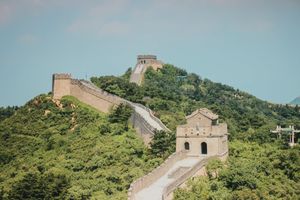
Great Wall
China
The Great Wall of China is a historical and cultural landmark that stretches for over 13,000 miles across northern China. It was built to protect the Chinese empire from invasions and is now a popular tourist attraction. However, it faces several threats, including climate change. Rising temperatures and changes in precipitation patterns can lead to increased erosion and structural damage to the wall. Additionally, the changes in temperature and water availability can potentially harm the local ecosystems surrounding the wall, impacting plant and animal species that rely on these habitats. Efforts are being made to preserve and restore the wall, as well as address the environmental challenges it faces.

Jahangir Tomb
Pakistan
The Jahangir Tomb is located in Lahore, Pakistan, and is a magnificent mausoleum built in memory of Emperor Jahangir, who ruled the Mughal Empire from 1605 to 1627. Situated within a walled enclosure, the tomb complex features intricate marble and fresco decorations, reflecting the architectural splendor of the Mughal era. However, this stunning historical site faces various threats, including climate change. Rising temperatures, changing precipitation patterns, and increased humidity levels pose risks to the preservation of its delicate artistic elements, while extreme weather events could also damage the structure. Additionally, climate change affects the local ecosystems surrounding the tomb, potentially disrupting their biodiversity and balance. Preservation efforts and adaptation measures are crucial to safeguard this cultural treasure and mitigate the impacts of climate change on its surroundings.
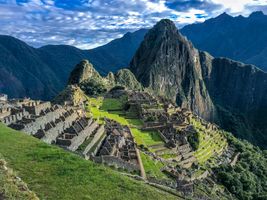
Machu Picchu
Peru
Machu Picchu is a historical Incan site situated in the Andes Mountains of Peru. It attracts numerous visitors due to its cultural significance and stunning architecture. However, this world heritage site faces several threats, including climate change. Rising temperatures and changing precipitation patterns in the region can result in soil erosion, landslides, and damage to the delicate ecosystem around Machu Picchu. Additionally, increased tourism puts a strain on the site's infrastructure, causing degradation and the potential loss of the unique biodiversity that thrives there. Efforts are being made to mitigate these threats to preserve this iconic site for future generations.
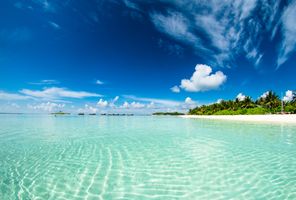
Maldives
The Maldives is an archipelago located in the Indian Ocean, consisting of 26 coral atolls. It is known for its pristine sandy beaches and rich marine biodiversity, making it a popular tourist destination. However, the Maldives faces various threats, particularly from climate change. Rising sea levels pose a significant risk to the low-lying islands, increasing the vulnerability of the local communities to flooding and erosion. Additionally, ocean acidification and coral bleaching have detrimental effects on the vibrant coral reefs, impacting the delicate balance of the local ecosystems and endangering marine life. Efforts are being made to address these threats and implement sustainable practices to mitigate the impacts on the Maldives' environment and people.

Mount Kilimanjaro
Tanzania
Mount Kilimanjaro is a dormant stratovolcano located in Tanzania, standing as the highest peak in Africa and attracting thousands of climbers annually. The mountain faces several threats, including the impacts of climate change. As global temperatures rise, the once-glaciated summit is experiencing rapid ice loss, with estimates suggesting that the glaciers may disappear completely within decades. This melting and shifting climate patterns also pose risks to the local ecosystems, including altered precipitation patterns and reduced water availability for plants and wildlife. Moreover, deforestation and human activities on the mountain also contribute to its degradation and further exacerbate the threats it faces.
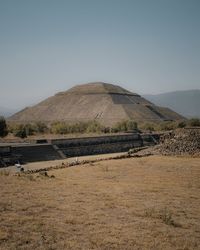
Teotihuacan
Mexico
Teotihuacan is an ancient Mesoamerican city located about 30 miles northeast of Mexico City, Mexico. It was one of the largest and most influential pre-Columbian cultures, known for its impressive pyramids and urban planning. However, Teotihuacan is facing several threats, including climate change. Rising temperatures, droughts, and extreme weather events could potentially damage the structural integrity of the ancient buildings. Moreover, climate change can disrupt local ecosystems, affecting the plants and animals that rely on the area for survival. Efforts to mitigate these threats are crucial to preserve this significant archaeological site.

Venice
Italy
Venice, Italy is a unique city situated in northeastern Italy, built on a group of 118 small islands separated by canals and linked by bridges. The city is famous for its beautiful architecture, art, and historical significance. However, Venice faces various threats, particularly from climate change. Rising sea levels pose a significant risk to the city, resulting in more frequent and severe flooding. These acqua alta events not only damage the city's infrastructure but also affect the delicate ecosystems of the Venetian Lagoon. The increased salinization of the lagoon water due to rising sea levels has detrimental effects on the local flora and fauna, threatening their survival. Efforts are being made to protect the city and its ecosystems, such as the MOSE project, but continued monitoring and adaptation measures are crucial to ensure Venice's sustainability.
Follow Us
(c) 2024 +Green, All rights reserved
